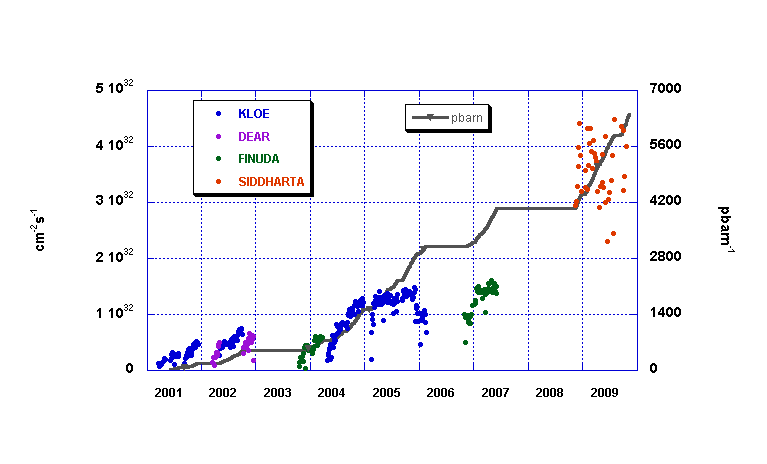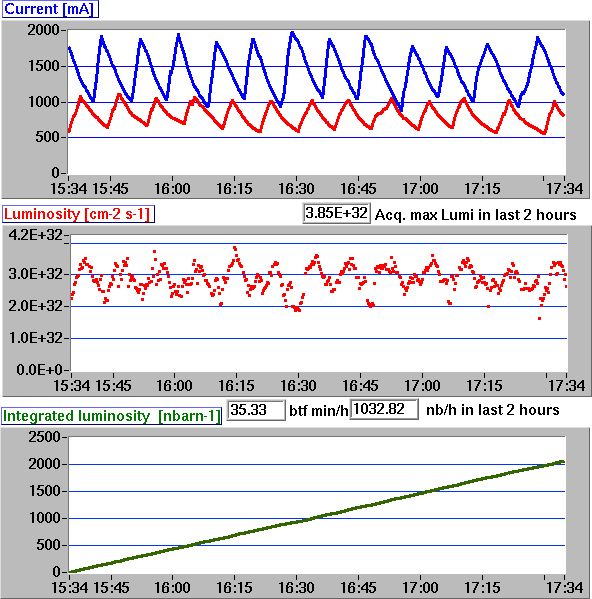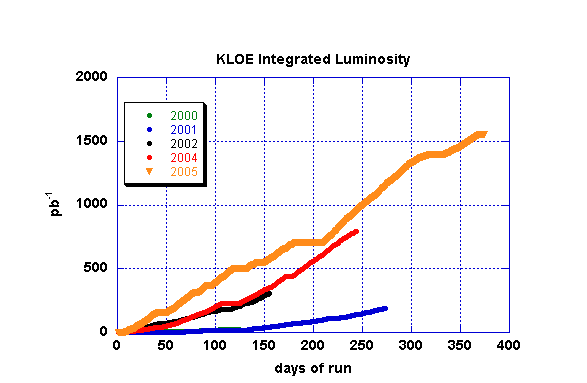

15 March 2009, record on peak luminosity: 4.36x10^32, I-=1470, I+=1003, 105 bunches
Crab sextupoles effect on dafne luminosity performance
On December 21 2008 ~ 4.0e32 cm-2s-1 peak luminosity has been achieved as weel as an integrated luminosity of 1pb-1/h (in quasi-topping-up mode).

Since December 2007, after 5 months of maintenance and upgrade of the two interaction regions, the DAFNE accelerator restarted operation with the fundamental purpose of testing the Crab Waist scheme and to provide luminosity to the SIDDHARTA experiment.
In February 2008, after a preliminary setup and recovery of the vacuum conditions, the SIDDHARTA prototype detector and the BHABHA luminosity monitor were installed.
On May 16, 2008 a peak luminosity of 2.2e32 cm-2s-1 has been reached, confirming the validity of the Large Piwinsky Angle and Crab Waist scheme.
After the summer shutdown and the SIDDHARTA final detector installation operation restarted late September, but several problems limited the optimum performance, mainly affecting the positron stability.
These problems have been mitigated. On November 25 2008 ~ 3.52e32 cm-2s-1 peak luminosity has been achieved as well as a daily integrated luminosity of 12pb-1/day (see online history).

DAFNE luminosity history from the installation of KLOE experiment up to 2007 FINUDA run where a peak luminosity of 1.5e32 cm-2s-1 was obtained as well as an integrated luminosity of ~ 10 pb-1/day
